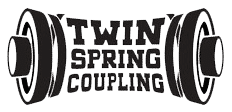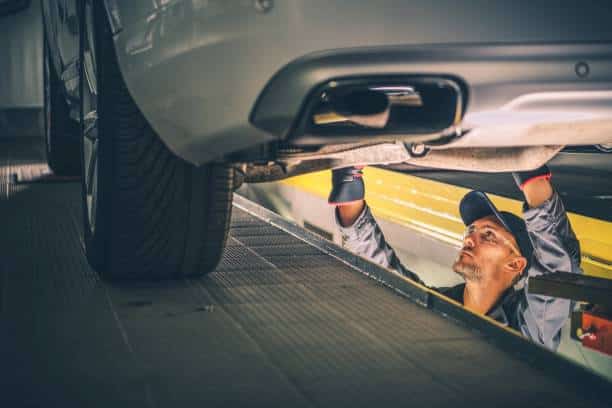Troubleshooting Vibrations and Noise Caused by Coupling Issues in Vehicles
Vibrations and noise in vehicles can be a frustrating and concerning issue for drivers. While some level of vibration and noise is normal, excessive or unusual vibrations and noises can be a sign of a more serious problem that requires attention. One common culprit behind these issues is the vehicle’s coupling components.
Couplings are essential mechanical devices that connect rotating shafts and transmit power between them. They play a crucial role in the smooth and efficient operation of a vehicle’s drivetrain, steering, and other systems. However, when couplings malfunction or become worn, they can be the source of unwanted vibrations and noises that can negatively impact the driving experience and even lead to more significant problems if left unaddressed.
In this blog post, we’ll explore the common causes of vibrations and noise related to coupling issues in vehicles, and discuss strategies for troubleshooting and resolving these problems. We’ll also highlight some of the leading original equipment manufacturers (OEMs) that produce high-quality couplings for the automotive industry.
Understanding Coupling-Related Vibrations and Noise
Couplings are responsible for transmitting torque and power between rotating components in a vehicle, such as the engine, transmission, and wheels. When a coupling is functioning correctly, it should do so smoothly and quietly, without introducing any significant vibrations or noises.
However, a variety of factors can cause couplings to become a source of unwanted vibrations and noises, including:
Misalignment: Improper alignment between the coupled shafts can create excessive stress on the coupling, leading to vibrations and potentially causing the coupling to fail prematurely.
Wear and Tear: Over time, the components of a coupling, such as the bearings, bushings, or flexible elements, can become worn or damaged, resulting in increased play and vibrations.
Imbalance: If a coupling is not properly balanced, it can create an uneven distribution of forces, leading to vibrations that are transmitted throughout the vehicle.
Resonance: Certain coupling designs or configurations may be susceptible to resonance, where the natural frequency of the coupling matches the frequency of the vibrations, amplifying the issue.
Lubrication Issues: Insufficient or improper lubrication of the coupling can cause increased friction and wear, contributing to vibrations and noise.
Improper Installation: If a coupling is not installed correctly, it can introduce misalignment, imbalance, or other issues that can lead to vibrations and noise.
Identifying the root cause of the vibrations and noise is crucial for effectively addressing the problem. Symptoms may include:
- Increased noise, such as clicking, grinding, or whirring sounds
Excessive vibrations felt through the steering wheel, pedals, or chassis
Shuddering or jerking motions during acceleration or deceleration
Premature wear or failure of other drivetrain components
Troubleshooting Coupling-Related Vibrations and Noise
When dealing with vibrations and noise related to couplings, it’s important to follow a systematic troubleshooting process to pinpoint the underlying issue. Here are some steps to consider:
Inspect the Coupling: Visually examine the coupling for any signs of wear, damage, or improper installation. Look for cracks, deformation, or excessive play in the coupling components.
Check Alignment: Ensure that the coupled shafts are properly aligned, both angularly and radially. Use a straightedge, dial indicator, or laser alignment tool to measure and adjust the alignment as needed.
Evaluate Balancing: Determine if the coupling is properly balanced by checking for any imbalance or eccentricity. This may involve dynamic balancing or other specialized techniques.
Analyze Vibration Patterns: Use a vibration analysis tool, such as a handheld vibration meter or accelerometer, to measure the vibration levels and frequencies at various points in the drivetrain. This can help identify the source and nature of the vibrations.
Review Lubrication: Inspect the coupling’s lubrication and ensure that the correct type and amount of lubricant is being used. Replenish or replace the lubricant as necessary.
Consult Manufacturer Recommendations: Refer to the coupling manufacturer’s specifications and guidelines for proper installation, maintenance, and troubleshooting procedures. This can provide valuable insights into addressing the specific issues you’re experiencing.
Consider Coupling Replacement: If the coupling is severely worn or damaged, or if the vibrations and noise persist despite other troubleshooting efforts, it may be necessary to replace the coupling with a new, high-quality component.
By following this systematic approach, you can effectively identify and address the root cause of the vibrations and noise, restoring the smooth and quiet operation of your vehicle’s drivetrain.
Leading Coupling OEMs in the Automotive Industry
When it comes to addressing coupling-related issues in vehicles, it’s important to work with reputable and reliable original equipment manufacturers (OEMs) that specialize in the design and production of high-quality coupling components. Here are some of the leading coupling OEMs in the automotive industry:
Dana Limited (Spicer), Meritor, Moog and SKF
These are just a few examples of the leading coupling OEMs in the automotive industry. When troubleshooting vibrations and noise related to couplings, it’s essential to work with reputable manufacturers that can provide high-quality, reliable, and well-engineered coupling solutions to address the specific needs of your vehicle.
Optimizing Coupling Performance for Vibration and Noise Reduction
To ensure the smooth and quiet operation of your vehicle’s drivetrain, it’s crucial to prioritize the selection, installation, and maintenance of high-quality coupling components. Here are some strategies for optimizing coupling performance to minimize vibrations and noise:
Choose the Right Coupling Type: Different coupling designs have varying characteristics when it comes to vibration and noise control. For example, flexible couplings are often better suited for absorbing shock and vibrations, while gear couplings may be more suitable for high-torque applications.
Ensure Proper Alignment: Proper alignment of the coupled shafts is essential for minimizing vibrations and wear. Follow the manufacturer’s guidelines for alignment tolerances and use specialized tools, such as laser alignment systems, to achieve the optimal alignment.
Implement Balanced Designs: Coupling components should be carefully balanced to prevent imbalance-induced vibrations. This may involve dynamic balancing or other specialized balancing techniques.
Maintain Proper Lubrication: Adequate and appropriate lubrication of the coupling’s moving parts is crucial for reducing friction, wear, and the resulting vibrations and noise. Follow the manufacturer’s recommendations for lubricant type and replenishment intervals.
Ensure Proper Installation: Improper installation of the coupling can lead to misalignment, imbalance, and other issues that can contribute to vibrations and noise. Carefully follow the manufacturer’s installation instructions and use the recommended tools and techniques.
Monitor and Maintain Couplings: Regularly inspect and maintain the coupling components to identify and address any signs of wear or damage before they escalate into more significant problems. This may involve visual inspections, vibration analysis, and scheduled replacement of worn parts.
Leverage Advanced Coupling Technologies: Newer coupling designs, such as those incorporating advanced materials, damping mechanisms, or integrated sensors, can offer enhanced vibration and noise control capabilities. Consult with leading OEMs to explore the latest coupling innovations that can benefit your vehicle’s performance.
By implementing these strategies and working with reputable coupling OEMs, you can optimize the performance of your vehicle’s couplings, minimizing vibrations and noise, and ensuring a smooth, comfortable, and reliable driving experience.
Troubleshooting Vibrations and Noise Caused by Coupling Issues in Vehicles Conclusion
Vibrations and noise caused by coupling issues in vehicles can be a frustrating and potentially dangerous problem. By understanding the common causes of these issues, following a systematic troubleshooting process, and leveraging the expertise of leading coupling OEMs, you can effectively address and resolve these problems, restoring the smooth and quiet operation of your vehicle’s drivetrain.
Remember, proactive maintenance, proper installation, and the use of high-quality coupling components are key to preventing and resolving vibration and noise issues. By prioritizing the performance and reliability of your vehicle’s couplings, you can enjoy a more comfortable, efficient, and safer driving experience.

